Key Takeaways
1. Operating Systems Manage Computer Resources
The operating system controls the hardware and coordinates its use among the various application programs for the various users.
Resource allocation. The operating system acts as a resource allocator, managing CPU time, memory space, storage, and I/O devices. It resolves conflicting requests and ensures efficient and fair distribution of resources among programs and users. This management is crucial for the overall performance and stability of the computer system.
Control program. The OS also functions as a control program, managing the execution of user programs to prevent errors and improper use of the computer. It is particularly concerned with the operation and control of I/O devices, ensuring that they are used correctly and efficiently. This control is essential for maintaining the integrity and security of the system.
Kernel as the core. The kernel is the one program running at all times on the computer, forming the core of the operating system. It is responsible for managing the system's resources and providing services to user programs. System programs, associated with the OS but not part of the kernel, and application programs, which include all other software, operate on top of the kernel.
2. Interrupts are Fundamental to OS Operation
Hardware may trigger an interrupt at any time by sending a signal to the CPU, usually by way of the system bus.
Hardware signals. Interrupts are signals sent by hardware to the CPU, alerting it to events that require immediate attention. These events can range from I/O operations completing to hardware faults occurring. The CPU responds by suspending its current activity and transferring control to a fixed location containing the interrupt service routine.
Interrupt vector. The interrupt vector is a table of pointers to interrupt routines, indexed by a unique number associated with each interrupt request. This allows the CPU to quickly dispatch to the appropriate handler without needing to poll all possible sources of interrupts. Both Windows and UNIX-based systems use this mechanism.
Interrupt handling. Modern operating systems require sophisticated interrupt-handling features, including the ability to defer interrupt handling during critical processing, efficient dispatch to the proper handler, and multilevel interrupts to prioritize urgent tasks. These features are provided by the CPU and interrupt-controller hardware.
3. Multiprocessor Systems Increase Throughput
The primary advantage of multiprocessor systems is increased throughput.
Parallel execution. Multiprocessor systems, including multicore systems, offer increased throughput by allowing multiple processes or threads to run simultaneously. This can significantly reduce the time required to complete complex tasks. However, the speed-up ratio is not linear due to overhead in keeping all parts working correctly.
Symmetric multiprocessing (SMP). In SMP systems, each CPU processor performs all tasks, including operating-system functions and user processes. This model allows for dynamic sharing of processes and resources among processors, leading to more efficient resource utilization.
Multicore efficiency. Multicore systems, where multiple computing cores reside on a single chip, can be more efficient than multiple chips with single cores due to faster on-chip communication and reduced power consumption. This makes them ideal for mobile devices and laptops.
4. Dual-Mode Operation Protects the OS
In order to ensure the proper execution of the system, we must be able to distinguish between the execution of operating-system code and user-defined code.
User vs. Kernel mode. To protect the operating system from errant users and errant users from one another, most computer systems provide hardware support for distinguishing between various modes of execution. At the very least, we need two separate modes of operation: user mode and kernel mode.
Privileged instructions. The hardware allows privileged instructions to be executed only in kernel mode. If an attempt is made to execute a privileged instruction in user mode, the hardware does not execute the instruction but rather treats it as illegal and traps it to the operating system.
System calls. System calls provide the means for a user program to ask the operating system to perform tasks reserved for the operating system on the user program’s behalf. A system call is invoked in a variety of ways, depending on the functionality provided by the underlying processor.
5. Resource Management is a Core OS Function
A computer system has many resources that may be required to solve a problem: CPU time, memory space, storage space, I/O devices, and so on.
Process management. The operating system is responsible for creating and deleting processes, scheduling processes and threads on the CPUs, suspending and resuming processes, and providing mechanisms for process synchronization and communication. These activities are essential for managing the execution of programs in a multitasking environment.
Memory management. The OS keeps track of which parts of memory are currently being used and by which process, allocates and deallocates memory space as needed, and decides which processes (or parts of processes) and data to move into and out of memory. This ensures efficient utilization of memory and prevents processes from interfering with each other.
File-system management. The operating system is responsible for creating and deleting files and directories, supporting primitives for manipulating files and directories, mapping files onto mass storage, and backing up files on stable storage media. These activities provide a uniform, logical view of information storage for users.
6. Virtualization Abstracts Hardware
Virtualization is a technology that allows us to abstract the hardware of a single computer (the CPU, memory, disk drives, network interface cards, and so forth) into several different execution environments.
Creating illusions. Virtualization allows us to abstract the hardware of a single computer into several different execution environments, creating the illusion that each environment is running on its own private computer. These environments can be viewed as different individual operating systems that may be running at the same time and may interact with each other.
Emulation vs. Virtualization. Emulation involves simulating computer hardware in software, typically used when the source CPU type is different from the target CPU type. Virtualization, in contrast, allows an operating system that is natively compiled for a particular CPU architecture to run within another operating system also native to that CPU.
Virtual Machine Manager (VMM). The VMM runs the guest operating systems, manages their resource use, and protects each guest from the others. It provides services and resource management to virtual machine processes, allowing multiple users to run tasks on a system designed for a single user.
7. Distributed Systems Share Resources
A distributed system is a collection of physically separate, possibly heterogeneous computer systems that are networked to provide users with access to the various resources that the system maintains.
Increased functionality. Access to a shared resource increases computation speed, functionality, data availability, and reliability. Some operating systems generalize network access as a form of file access, with the details of networking contained in the network interface’s device driver.
Network types. Networks vary by the protocols used, the distances between nodes, and the transport media. TCP/IP is the most common network protocol, and it provides the fundamental architecture of the Internet. Networks are characterized based on the distances between their nodes, including LAN, WAN, MAN, and PAN.
Network operating systems. A network operating system is an operating system that provides features such as file sharing across the network, along with a communication scheme that allows different processes on different computers to exchange messages. A computer running a network operating system acts autonomously from all other computers on the network.
8. Kernel Data Structures are Essential for OS Implementation
In this section, we briefly describe several fundamental data structures used extensively in operating systems.
Arrays and Lists. An array is a simple data structure in which each element can be accessed directly. Lists are perhaps the most fundamental data structures in computer science. Whereas each item in an array can be accessed directly, the items in a list must be accessed in a particular order.
Stacks and Queues. A stack is a sequentially ordered data structure that uses the last in, first out (LIFO) principle for adding and removing items. A queue, in contrast, is a sequentially ordered data structure that uses the first in, first out (FIFO) principle.
Trees and Hash Functions. A tree is a data structure that can be used to represent data hierarchically. A hash function takes data as its input, performs a numeric operation on the data, and returns a numeric value. This numeric value can then be used as an index into a table to quickly retrieve the data.
Last updated:
FAQ
1. What is "Operating System Concepts" by Abraham Silberschatz about?
- Comprehensive OS Overview: "Operating System Concepts" by Abraham Silberschatz provides a thorough introduction to the fundamental principles and design of operating systems, covering topics such as process management, memory management, file systems, security, and distributed systems.
- Balanced Theory and Practice: The book balances theoretical models with practical examples, using real-world operating systems like Linux, Windows, and macOS to illustrate key concepts.
- Educational Focus: It is widely used as a textbook for undergraduate and graduate courses, making complex OS topics accessible through intuitive explanations and practical exercises.
2. Why should I read "Operating System Concepts" by Abraham Silberschatz?
- Authoritative Resource: Authored by a leading expert, the book is considered a definitive reference in the field of operating systems and is used in many academic programs worldwide.
- Up-to-Date Content: The latest edition covers modern developments such as virtualization, multicore systems, mobile OSs, and cloud computing, ensuring relevance to current technology trends.
- Practical Application: It provides detailed case studies and programming projects, making it valuable for both students and practitioners seeking to understand and apply OS principles.
3. What are the key takeaways from "Operating System Concepts" by Abraham Silberschatz?
- Core OS Concepts: Readers gain a solid understanding of processes, threads, scheduling, memory management, file systems, and security mechanisms.
- Real-World Examples: The book uses examples from popular operating systems to demonstrate how theoretical concepts are implemented in practice.
- Advanced Topics: It introduces advanced areas such as virtualization, distributed systems, and multiprocessor scheduling, preparing readers for further study or professional work in the field.
4. How does "Operating System Concepts" by Abraham Silberschatz explain process management and scheduling?
- Process Fundamentals: The book defines processes as programs in execution, detailing their states, control blocks, and transitions.
- Scheduling Algorithms: It covers a range of CPU scheduling algorithms, including FCFS, SJF, round-robin, priority scheduling, and real-time scheduling, explaining their criteria and trade-offs.
- Multithreading and Concurrency: The text explores threads, multithreading models, and the benefits and challenges of concurrent execution, with examples from Linux, Windows, and Solaris.
5. What memory management techniques are detailed in "Operating System Concepts" by Abraham Silberschatz?
- Contiguous and Non-Contiguous Allocation: The book explains contiguous memory allocation, paging, segmentation, and the use of page tables for address translation.
- Virtual Memory: It introduces virtual memory concepts, including demand paging, copy-on-write, and page replacement algorithms like FIFO and LRU.
- Kernel and User Memory: The text discusses kernel memory allocation methods such as the buddy system and slab allocation, as well as user-level memory management and protection.
6. How does "Operating System Concepts" by Abraham Silberschatz cover file systems and storage management?
- File System Concepts: The book details file attributes, operations, directory structures (single-level, tree-structured, graph), and access methods.
- Implementation and Performance: It explains file allocation methods (contiguous, linked, indexed), free-space management, caching, and recovery techniques like journaling.
- Distributed and Network File Systems: The text covers virtual file systems, remote file access, consistency semantics, and protocols such as NFS, with models for client-server and cluster-based distributed file systems.
7. What security and protection mechanisms are discussed in "Operating System Concepts" by Abraham Silberschatz?
- Threats and Defenses: The book addresses program threats (malware, viruses, worms), system and network threats (denial of service, port scanning), and security defenses (antivirus, firewalls, intrusion detection).
- Access Control Models: It covers discretionary, mandatory, and role-based access control, as well as protection rings and capability-based security.
- Cryptography and Authentication: The text explains symmetric and asymmetric encryption, digital signatures, password security, and authentication methods including biometrics.
8. How does "Operating System Concepts" by Abraham Silberschatz explain process synchronization and deadlock handling?
- Synchronization Primitives: The book introduces mutex locks, semaphores, monitors, and condition variables, illustrating their use in classic problems like the bounded-buffer and dining-philosophers.
- Deadlock Characterization: It defines the necessary conditions for deadlock, resource-allocation graphs, and methods for prevention, avoidance (banker’s algorithm), detection, and recovery.
- Practical Implementation: Examples from POSIX, Java, Windows, and Linux demonstrate how synchronization and deadlock handling are realized in real systems.
9. What is the approach to virtualization and virtual machines in "Operating System Concepts" by Abraham Silberschatz?
- Virtualization Fundamentals: The book describes virtualization as the abstraction of hardware into multiple execution environments, supporting multiple OSs on a single machine.
- Types of Virtual Machines: It explains type 0, 1, and 2 hypervisors, paravirtualization, and programming-environment virtualization (e.g., Java JVM).
- Implementation Techniques: The text covers trap-and-emulate, binary translation, and hardware-assisted virtualization, with case studies of VMware and Linux virtual machines.
10. How are networks and distributed systems presented in "Operating System Concepts" by Abraham Silberschatz?
- Distributed System Benefits: The book highlights resource sharing, computation speedup, and reliability as key advantages of distributed systems.
- Network Structures and Protocols: It explains LANs, WANs, network communication protocols (TCP/IP, UDP), and naming and name resolution (DNS).
- Distributed File Systems: The text discusses client-server and cluster-based models, transparency, scalability, and consistency mechanisms in distributed file systems.
11. What are the major case studies and real-world examples in "Operating System Concepts" by Abraham Silberschatz?
- Linux: The book provides an in-depth look at Linux’s process management, scheduling (CFS), memory management, file systems (VFS, ext3), and security features.
- Windows and BSD UNIX: It covers Windows architecture (kernel, executive, security), process and memory management in FreeBSD, and the evolution of Windows security and reliability.
- Mach Microkernel: The text presents Mach’s microkernel design, message passing, tasks, threads, and memory management as a model for modern OS research.
12. What are the most important programming projects and exercises in "Operating System Concepts" by Abraham Silberschatz?
- Synchronization Problems: Projects include implementing classic synchronization problems like the dining philosophers, producer-consumer, and sleeping barber using mutexes and semaphores.
- Memory Management Simulations: Exercises involve simulating memory allocation strategies, page replacement algorithms, and the banker’s algorithm for deadlock avoidance.
- Kernel and System Programming: The book offers projects on creating Linux kernel modules, using system calls for process and file management, and experimenting with a downloadable Linux virtual machine for hands-on learning.
Review Summary
Operating System Concepts receives mixed reviews. Many praise its comprehensive coverage of OS topics, but criticize its dry writing style and inconsistent depth. Some find it difficult to follow and boring, while others appreciate its detailed explanations. Readers note it switches between high-level and low-level content abruptly. It's recommended as a reference but not ideal for self-study. Some prefer alternative texts like Tanenbaum's. Despite flaws, it remains a widely-used textbook for OS courses, with some finding it helpful for understanding core concepts.
Similar Books
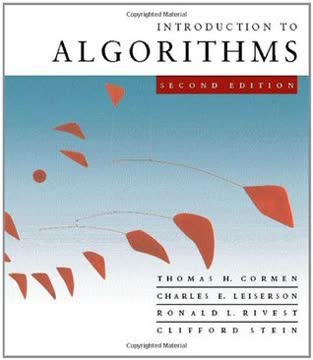
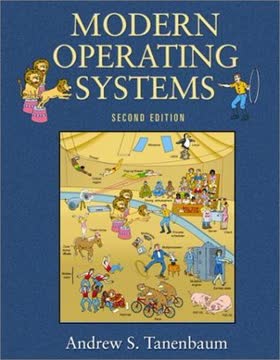
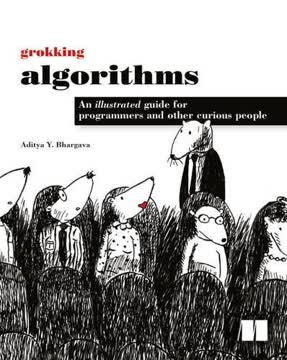
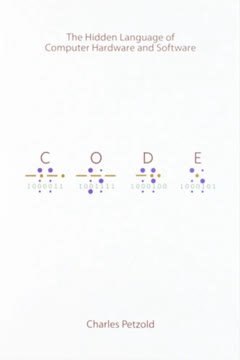



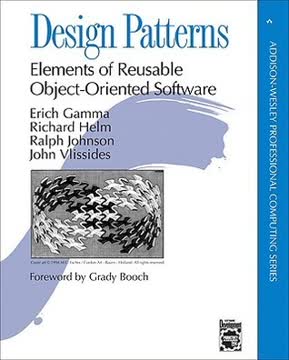
Download PDF
Download EPUB
.epub digital book format is ideal for reading ebooks on phones, tablets, and e-readers.




